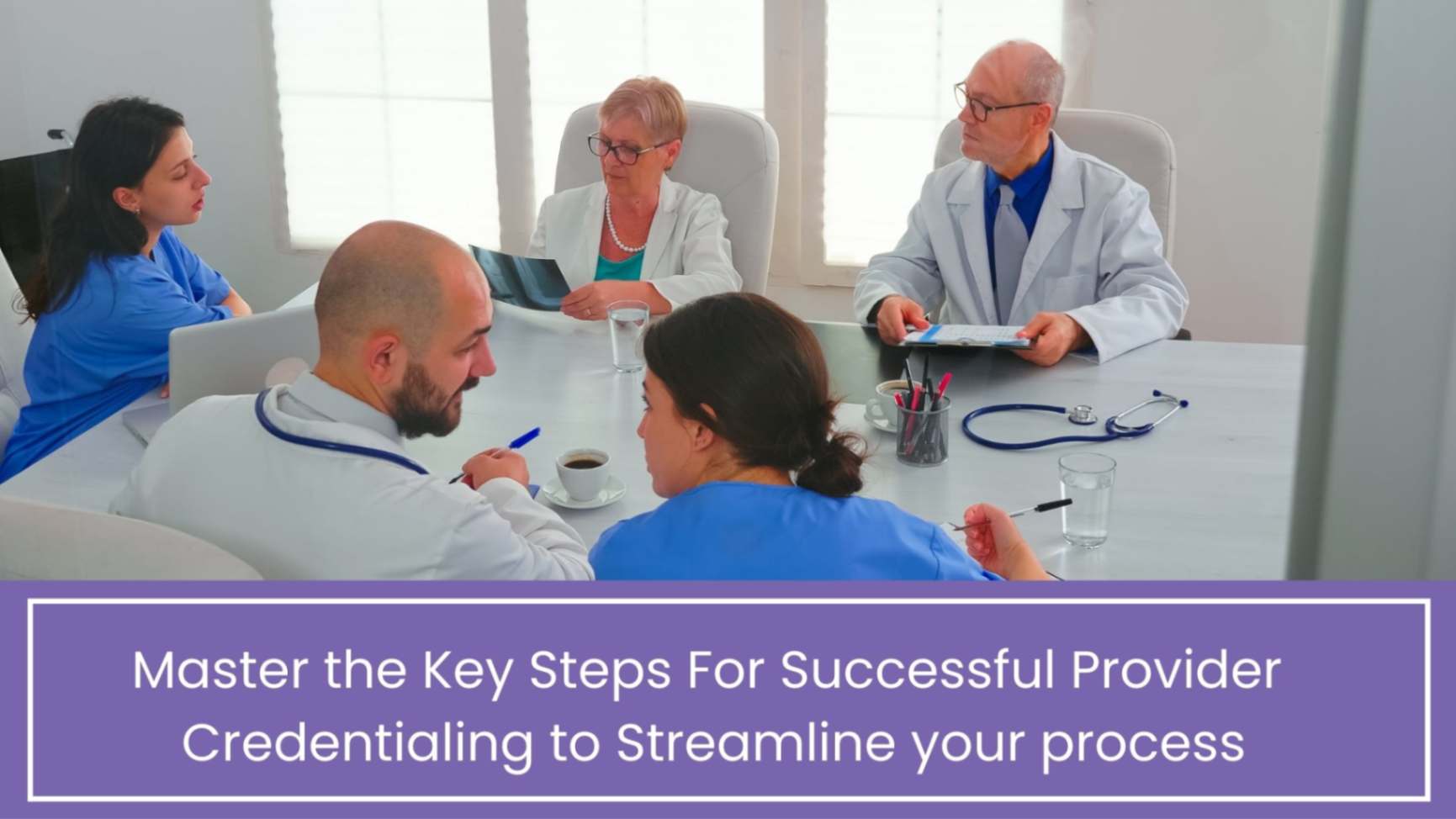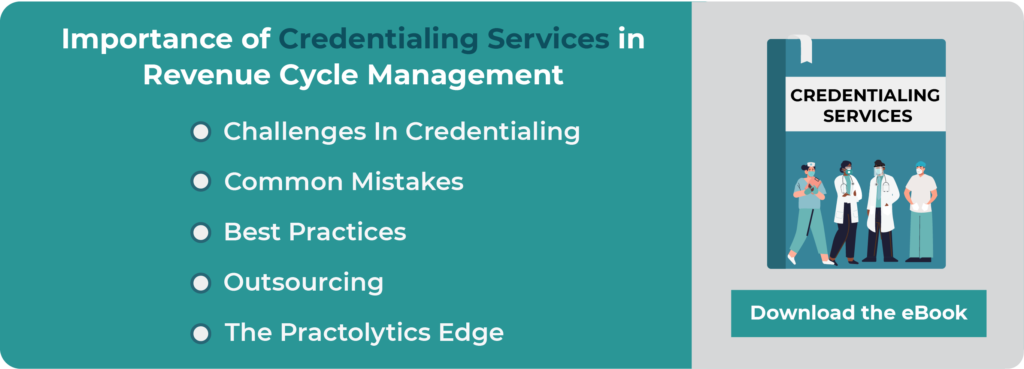Key Steps For Successful Provider Credentialing
The objective of a healthcare professional is straightforward: to offer patient care. Provider credentialing Services is a crucial process. It is the first hurdle to overcome before achieving your goal.
The process of confirming a healthcare provider’s credentials is known as credentialing. It entails verifying their education, training, employment history, and license. Credentials are checked by healthcare organizations, insurance companies, and hospitals. They also ensure providers meet professional standards for care. Medical Insurance companies won’t pay you without it. Your practice won’t prosper without it.
Despite its apparent simplicity, the credentialing process is infamously challenging and time-consuming. It is also full with possible dangers. For any practice, a single mistake or missed deadline can result in months of payment delays. This can be a major hassle. The good news is that this process is simple for you to manage. It is considerably simpler with a proactive, well-planned strategy.Here are the key steps for successful provider credentialing strategy.
Step 1: Get Organized Before You Begin
Missing or out-of-date information is a common cause of credentialing delays. Medical Credentialing delays are often caused by missing or outdated information. Set aside time to collect and arrange the required paperwork. Arrange the paperwork before you touch an application form. This comprises, but is not restricted to:
- Your CV or resume
- Medical license(s)
- DEA and/or CDS certificates
- Board certifications
- coverage for malpractice insurance (both past and present)
- Training certificates and degrees of education
- Immunization records
- Professional references
Make sure all documents are up to date. Create a digital folder for them. A central repository will streamline your workflow by saving you time spent searching for documents. This requires assigning a point person or small team to oversee the information. This team should ensure the information is constantly updated and readily available.
Step 2: Master the CAQH ProView
The Council for Affordable Quality Healthcare (CAQH) ProView is a crucial tool in your credentialing toolbox. It is revolutionary. CAQH developed a worldwide online credentialing database. The database is a non-profit collaboration. Your information is accessible to several health plans. You enter it once, and it becomes accessible to them.
This device functions, but only if it is kept up to date. You must affirm your information is correct at least once every 120 days after your original enrollment. This affirmation must occur at least once every 120 days. Providers often make the mistake of setting up systems once and forgetting about them. This leads to a slow credentialing process and outdated data. Your CAQH profile is a living document. It requires ongoing care to be effective.
Step 3: Understand Primary Source Verification (PSV)
Primary Source Verification is the bedrock of credentialing. It’s the process by which the insurance payer or organization verifies your credentials directly with the original source. They will verify your medical license’s authenticity with the state licensing authority. They will not accept a copy alone.
This occurs for each significant piece of information you submit. Your residency at the hospital and your education are confirmed with your medical school. Although there’s little you can do to speed up the process, you can avoid red flags by ensuring your information is accurate on your CAQH ProView and all applications.
Step 4: Navigate the Payer Applications
Here’s when things become complicated. Insurance payers have different application processes. These procedures differ based on the payer, including as commercial plans, Medicare, and Medicaid. For each payer you wish to be paneled with, you will still need to complete a separate application. CAQH makes the process more efficient, but you will still need to do this.
A significant volume of documentation is to be expected. It’s crucial to accurately and thoroughly fill out every field. Each application may ask for slightly different information. Your application may be returned if you leave any box empty. This could restart a drawn-out process. Check everything or have someone trustworthy do it for you.
Step 5: Take the initiative to follow up
What comes next after you’ve sent in your applications? A proactive approach is quite helpful in this situation. Insurance payers can process applications in 90 to 120 days or more. The processing time can vary. Don’t wait for a call from them.
A tracking system that works is crucial. Take note of the recipient’s contact details. Both the application submission date and the follow-up date should be included. This information has to be arranged. Make use of specialized software or a spreadsheet. Check the status of your application. Contact the payer’s provider enrollment department by calling or emailing on a regular basis, such as every two weeks. A blocked application can be advanced by diligent follow-up. This follow-up is frequent.
Step 6: Brace for the Final Review and On-site Visits
Your application is sent to a final review committee. After all the data is confirmed and the application is complete, it is sent to the committee. This committee is made up of administrators and medical professionals. They will examine your background and application. In some cases, especially for new practices or specific payers, an on-site visit may be required.
The on-site inspection’s goal is to verify compliance. This verification guarantees that the practice satisfies the payer’s specifications. This entails looking at things like access, record storage, signs, and hygiene. These components are essential to a secure and effective healthcare setting. The process can proceed more easily at this stage. Well in advance, make sure your practice is up to code.
Step 7: Keep Your Credentials Up to Date
Provider Credentialing Services is not a one-time event. Payers ask you to repeat the process every few years. This procedure, known as re-credentialing, entails updating your data and making sure you fulfill their standards.
It’s critical to have a system to monitor these dates. The first step may take as long as re-credentialing. For every re-credentialing date, put a reminder on your calendar. Update your CAQH profile regularly. A provider’s ability to be removed from an insurance network can impair patient treatment and income. Proactive re-credentialing avoids this risk.
Conclusion:
An intricate aspect of managing a profitable medical business is provider credentialing companies. It is frequently annoying. You can make the process easier to handle. A precise plan and a dedication to organization are necessary when approaching it. Each stage of the procedure builds on the one before it. Utilize CAQH’s resources to be successful. Keep deadlines in mind. Follow up diligently.
The success of a practice depends on a smooth credentialing procedure. This ensures a successful practice. It guarantees a consistent income. It increases your patient base and allows you to focus on providing excellent treatment.
Talk to Medical Billing Expert Today — Get a Free Demo Now!






